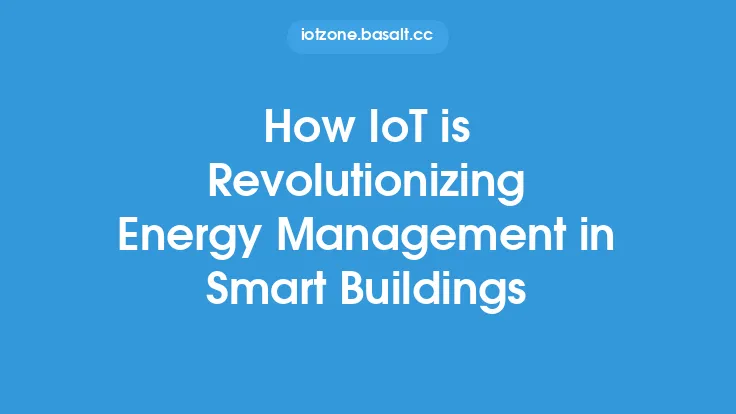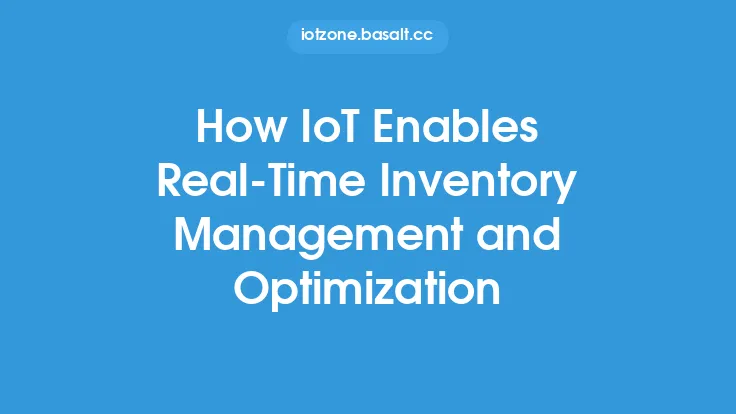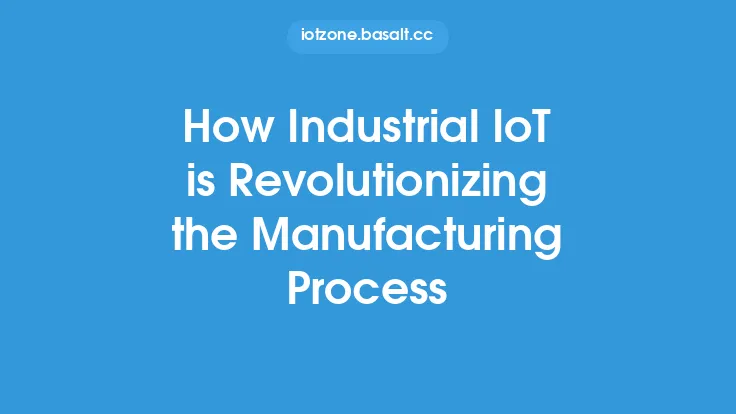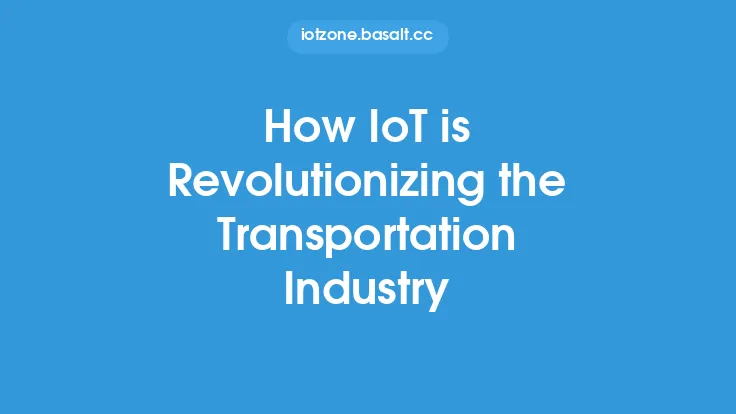The retail industry has undergone significant transformations in recent years, driven by advances in technology and changing consumer behaviors. One key area where technology is making a substantial impact is in inventory management. The Internet of Things (IoT) is revolutionizing retail by enabling smart inventory management, which is crucial for retailers to remain competitive and responsive to customer demands. At its core, IoT in retail involves the use of internet-connected devices to collect and analyze data, making inventory management more efficient, accurate, and automated.
Introduction to Smart Inventory Management
Smart inventory management refers to the use of advanced technologies, including IoT devices, sensors, and data analytics, to monitor, manage, and optimize inventory levels in real-time. This approach allows retailers to have a more precise understanding of their stock levels, locations, and conditions, enabling them to make informed decisions about replenishment, storage, and distribution. By leveraging IoT, retailers can automate many of the manual processes associated with traditional inventory management, such as counting and tracking inventory, which are prone to errors and inefficiencies.
Key Components of IoT in Smart Inventory Management
Several key components are integral to the implementation of IoT in smart inventory management. These include:
- RFID (Radio Frequency Identification) Tags: These are small devices attached to products or packaging that can be read by RFID readers. They provide a unique identifier for each item, allowing for accurate tracking and counting of inventory.
- Sensors: Various types of sensors, such as temperature, humidity, and motion sensors, can be used to monitor the condition and movement of inventory. This is particularly useful for perishable goods or items that require specific storage conditions.
- IoT Gateways: These devices act as bridges between the sensors and the cloud or local servers, enabling the collection and transmission of data from IoT devices to the management system.
- Cloud-Based Software: Advanced software solutions analyze the data collected from IoT devices, providing insights into inventory levels, product movement, and storage conditions. This information can be accessed remotely, allowing for real-time monitoring and decision-making.
Benefits of IoT in Retail Inventory Management
The integration of IoT into retail inventory management offers numerous benefits, including:
- Improved Accuracy: Automated tracking and counting reduce human error, ensuring that inventory levels are accurate and up-to-date.
- Enhanced Efficiency: Automation of inventory management tasks frees up staff to focus on higher-value activities, such as customer service and sales.
- Real-Time Visibility: Retailers have instant access to inventory data, enabling them to respond quickly to changes in demand or supply chain disruptions.
- Optimized Stock Levels: With precise data on inventory movement and levels, retailers can optimize their stock levels, reducing the risk of overstocking or understocking.
- Better Customer Service: By ensuring that products are available when customers want them, retailers can improve customer satisfaction and loyalty.
Challenges and Considerations
While the benefits of IoT in retail inventory management are significant, there are also challenges and considerations that retailers must address. These include:
- Initial Investment: Implementing an IoT-based inventory management system can require a substantial upfront investment in hardware, software, and training.
- Data Security: The use of IoT devices and cloud-based software introduces new data security risks, which must be mitigated through robust security measures.
- Integration with Existing Systems: IoT solutions must be integrated with existing inventory management systems, ERP systems, and other retail technologies, which can be complex and time-consuming.
- Scalability: As the number of IoT devices and the volume of data they generate increase, retailers must ensure that their systems can scale to handle this growth.
Future of IoT in Retail Inventory Management
The future of IoT in retail inventory management is promising, with ongoing advancements in technology expected to further enhance the efficiency, accuracy, and responsiveness of inventory management systems. Emerging trends, such as the use of artificial intelligence (AI) and machine learning (ML) to analyze inventory data and predict demand, are likely to play a significant role in shaping the future of retail inventory management. Additionally, the integration of IoT with other technologies, such as blockchain, could provide even greater transparency and security in supply chain management.
Implementing IoT for Smart Inventory Management
For retailers looking to implement IoT for smart inventory management, several steps can be taken:
- Assess Current Inventory Management Practices: Understand the current challenges and inefficiencies in inventory management to identify where IoT can add the most value.
- Choose the Right Technology: Select IoT devices, software, and platforms that align with the retailer's specific needs and goals.
- Develop a Implementation Plan: Create a detailed plan for the implementation of IoT technology, including timelines, budgets, and resource allocation.
- Train Staff: Ensure that staff are trained to use the new systems and understand how to interpret and act on the data provided by IoT devices.
- Monitor and Evaluate: Continuously monitor the performance of the IoT-based inventory management system and evaluate its effectiveness in achieving desired outcomes.
By embracing IoT technology, retailers can revolutionize their inventory management practices, leading to improved operational efficiency, enhanced customer satisfaction, and ultimately, increased competitiveness in the market. As the retail landscape continues to evolve, the role of IoT in smart inventory management will become increasingly critical for retailers seeking to thrive in a digital age.





